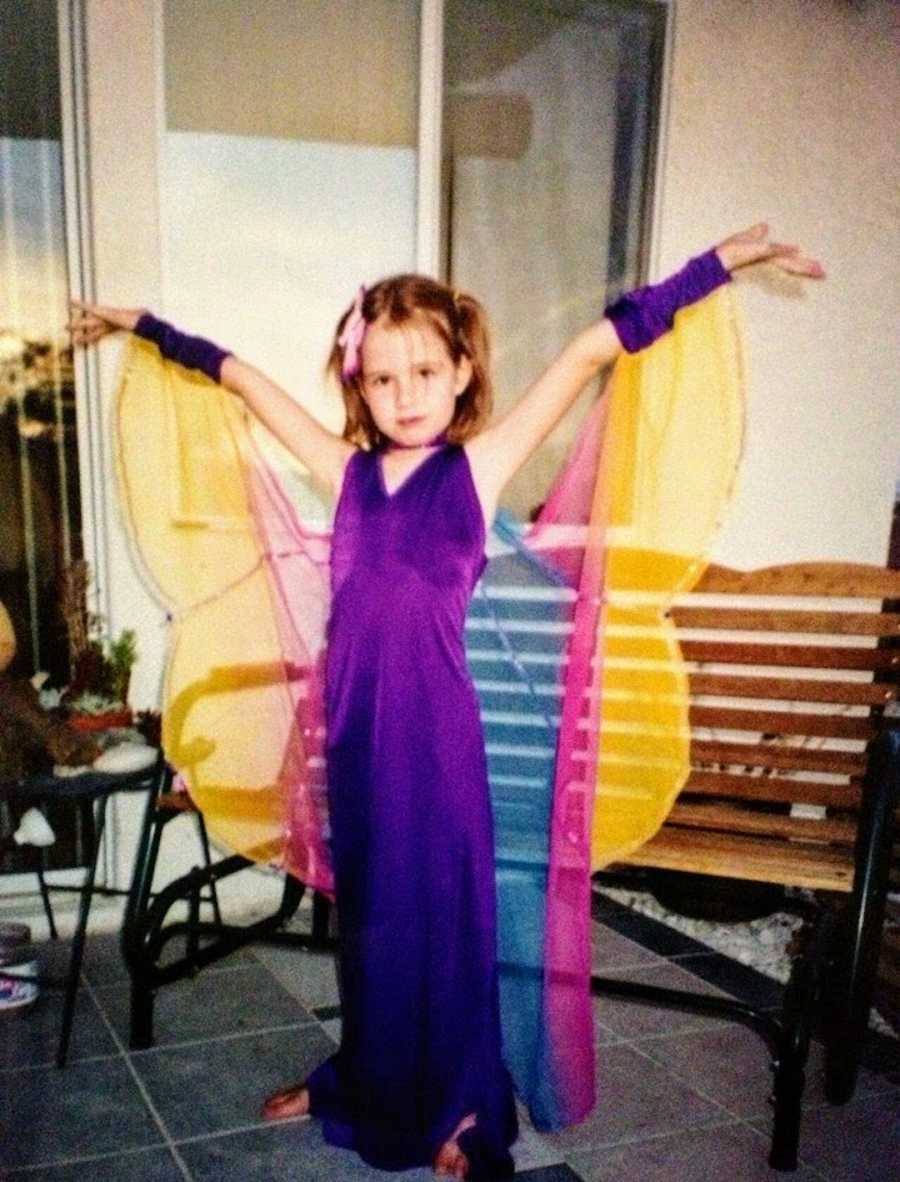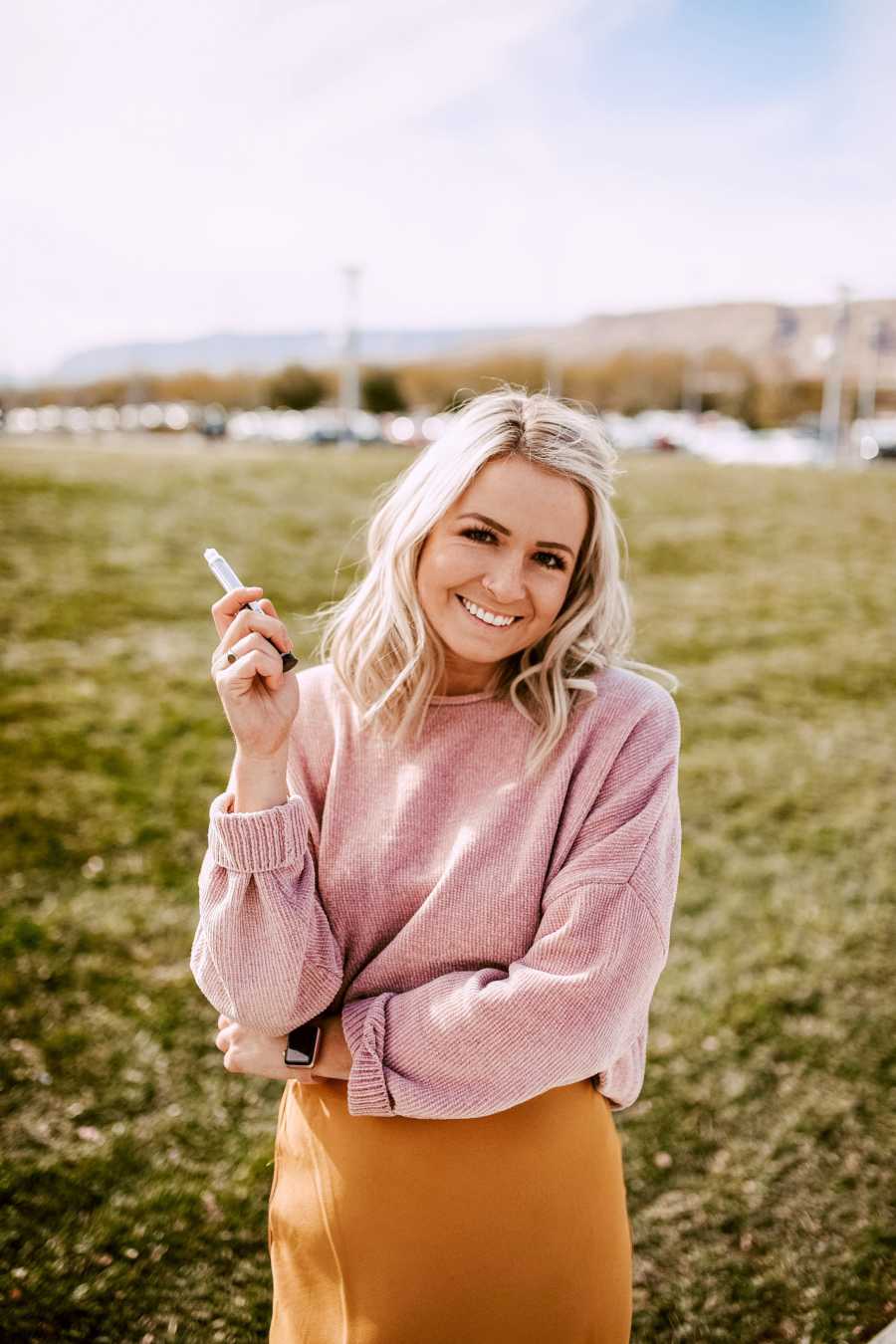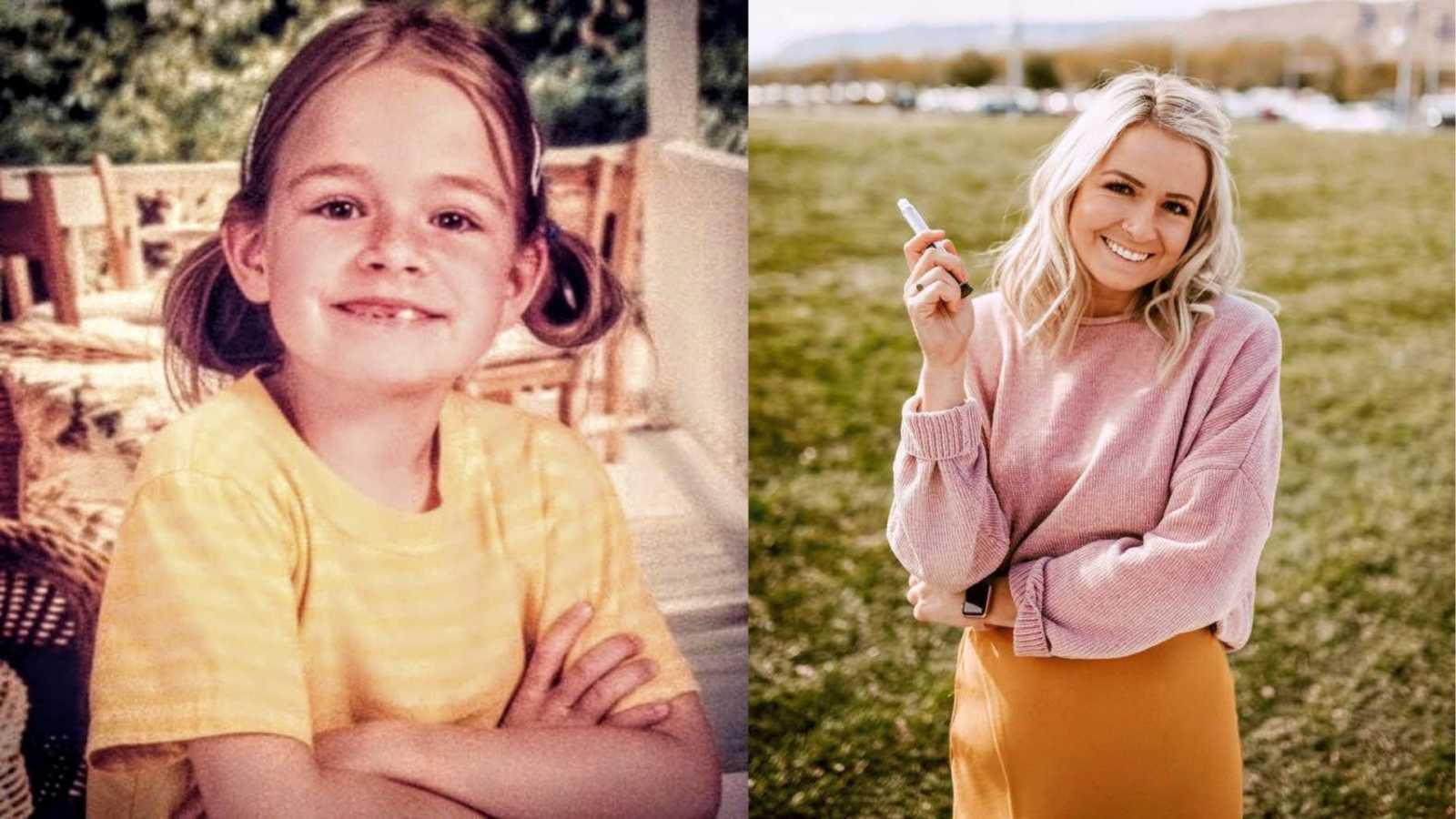“In November of 2003, I had just turned ten years old. I was losing weight, I was drinking excessive amounts of water, and I was constantly using the restroom. About a week before Thanksgiving, my mom realized it was time to take me to the doctor. After a quick finger prick from my pediatrician, I was rushed to the emergency room. ‘Ariana has type 1 diabetes, her blood sugar is currently in the 500’s,’ the doctor said.

Type 1 diabetes is an autoimmune disease that occurs when the insulin-producing cells, or beta cells, are attacked and destroyed by your own body. It then requires insulin to be injected (or inhaled) in order to control blood sugar levels. The blood sugar of a non-diabetic ranges from 70-90 when fasting, and up to 140 two hours after a meal. I don’t remember much from being in the hospital, besides having nurses poke my fingers every few hours, and my parents practicing giving injections into an orange (a very weird sight at the time). After four days of carb counting, sliding scale discussions, and diabetes management education, we were released into the world and I started life as I knew it as a type 1 diabetic.
The first few months of being diagnosed with diabetes were a blur. My parents found themselves with a lot of extra stress trying to figure out how to keep their child alive. They had to be very strict about meal times, consistently think about my blood sugar, and monitor my every move until we all became a little more comfortable about this diagnosis. When asking my mother about her first concerns about my condition, she said, ‘We were worried about whether we would be able to count carbs correctly and scared we would give you too much or too little insulin.’

Sleepovers at friends’ houses were also off the table for a while, which made me feel isolated and weird for having a disease that prevented me from doing normal things in the short term. It also ended up being difficult to visit with extended family for a bit. The summer after I was diagnosed, my aunt failed to understand I wasn’t able to eat the same things as my cousin. I wasn’t able to eat a PopTart at random moments anymore—not without counting the carbohydrates and taking an insulin shot. In silly-seeming moments like this, my parents were frustrated and concerned, and I was embarrassed and shameful for being the cause of commotion.
Finishing elementary school and diving into the new world of middle school was a difficult experience for someone living with a chronic illness misunderstood by so many, especially children. Classmates were no longer envious of my ability to eat a snack in the middle of class, and my mini muffins were met with judgmental stares or eye rolls. I received weird looks for checking my blood sugar in class and felt awkward telling a teacher I was unable to complete a test because I needed to go to the nurse. The reality was most kids aren’t aware of how type 1 diabetes worked. I know I wasn’t when I was first diagnosed. They either think it’s a disease for ‘old people’ or it’s from eating too much cake, which are both misconceptions about either type of diabetes.

A few years after being diagnosed, my parents sent me to a diabetes camp. They understood the importance of surrounding me with other children who were dealing with the same thing. I cried and cried for an entire week before it was time to leave for camp. I was terrified of being away from my parents who (as far as I knew) were the only ones who knew how to take care of me if I failed to do so myself. As a kid who requires a lot of medication, it was a big step in learning how to take care of myself and was incredibly beneficial to feel as though I wasn’t alone in my new normal. Diabetes camp ended up being one of the most rewarding parts of growing up with this disease. As I went through middle school and onto high school, I kept my diabetes to myself. I told my friends, and any boys I liked (eventually), but didn’t care to broadcast it on social media or make it a large part of my life. I felt very embarrassed about my chronic illness. I didn’t want anyone to judge me based on something they thought they knew about diabetes, and I didn’t want anyone to judge me for injecting in public, or for stopping to treat a low blood sugar at an inconvenient time.

It was incredibly difficult when a teacher didn’t seem to understand. In 10th grade, during a regular class period, I started to feel dizzy and faint (a sign of hypoglycemia, aka low blood sugar). When this happened, I was required to go to the nurses office to get a snack to treat my low. I walked up to my teacher to ask if I was able to go. She turned to me and said, ‘Absolutely not. Sit down.’ It was as if she didn’t believe me. In a slight state of shock, I asked again, making sure I let her know it was an emergency. She continued to dismiss my requests and began to completely ignore me. Thankfully, as a sixteen year old, I knew to just walk out and go to the nurses office, which is exactly what I did. I knew my 504 Plan protects my right to go to the nurse when I am feeling sick, and stops discrimination against people with disabilities at school. After this experience, I was furious. What if I had been a lot younger, unable to understand I had the right to walk out of class on my own? What if I was scared to challenge an authority figure because I had just been diagnosed? I can’t think about it without getting upset all over again about this moment.
It’s incredibly challenging to feel like a misunderstood burden to others when your health is on the line. It’s hard to feel like people don’t believe you, just because they can’t see your illness. It’s scary to place your trust in others when they can’t know what it’s like to live their daily life as someone with diabetes. In college, people seemed to be more understanding. I was so thankful for how normal it is for people to eat during a lecture! The majority of people could grasp what I needed to do to take care of myself and never really asked questions, which I found to be a nice change from lower education. A few years out of college, I began to feel much more comfortable in my own skin. Maybe it was figuring out who I was becoming in life and understanding diabetes was just a part of who I am. I started dating someone who really made me feel beautiful, no matter what devices I was wearing or how often I had to inject insulin in public. It can be scary to date with a chronic illness but he never saw it as an issue.

I’ve always been the type of person to look at the glass half full (or at least I try to), and that’s always been the case with my diabetes. Living with an incurable disease can weigh on you if you let it. I have my off days, but for the most part, I find it incredibly important to have a positive attitude. This is what originally drew me to the idea of sharing the highs and lows of my diabetes on the internet. After years of experience growing up with diabetes, I felt it could be beneficial to both diabetics and non-diabetics alike to read about my day-to-day life with T1D, spreading awareness for a disease not many people are educated on, and sharing insights with those who deal with the same thing. What I found was a beautiful online community of other type 1 diabetics that shares knowledge, tips, and support for those who don’t know another diabetic in person. Since then, I’ve been writing about my everyday experiences, sharing stories, and offering a friendly face to other diabetics through my blog and Instagram page. It’s become a truly gratifying experience, and I am so thankful I created this platform. The more people that can show the world what it’s like to live with type 1 diabetes, the better.
I don’t think most people understand all of the decisions that go into a day of living with diabetes. The moment I wake up in the morning I think: What’s my blood sugar? Do I need to take insulin or do I need to eat something? What I am eating for breakfast? What time am I eating breakfast? When should I take my insulin for breakfast? How many carbohydrates will I be eating? What is my insulin-to-carb ratio? This continues throughout the entirety of my day, every day, and will for the rest of my life. Every time I leave the house, whether it be a trip to the store or on an international vacation, I have to inventory everything I am bringing with me and make sure I have snacks, medication, and back-up supplies.

It’s a stressful disease that has made me a more responsible and aware person. I recently wrote on my blog I was thankful for having diabetes. I received quite a few messages from people confused as to how I could ever feel thankful to have a chronic illness. I replied, ‘I’m thankful for the strength and knowledge this disease has brought to my life. I bet I can juggle a lot more things in everyday life than I would without it. I also wouldn’t eat as healthy if it weren’t for the structure and information I’ve learned having type one diabetes. I’m thankful for the education and awareness I’m able to spread by simply living with this disease.’

I’m thankful for the confidence diabetes has brought to my life (gradually, of course). It’s difficult to live with something many are unfamiliar with, especially when it requires showing it to the public more often than I would like. It has unknowingly forced me to become more open about what I deal with on a daily basis, especially since creating my blog, Cup of Oj.
Among all of the negatives, I wouldn’t be the person I am today without experiencing life with type 1 diabetes. And for that, I am truly grateful.”

This story was submitted to Love What Matters by Ariana Frayer of Las Vegas, Nevada. You can follow her journey on Instagram and her website. Submit your own story here, and be sure to subscribe to our free email newsletter for our best stories, and YouTube for our best videos.
Read more stories like this:
Do you have a loved one with diabetes? Please SHARE on Facebook to make them aware there is a community of support available.




